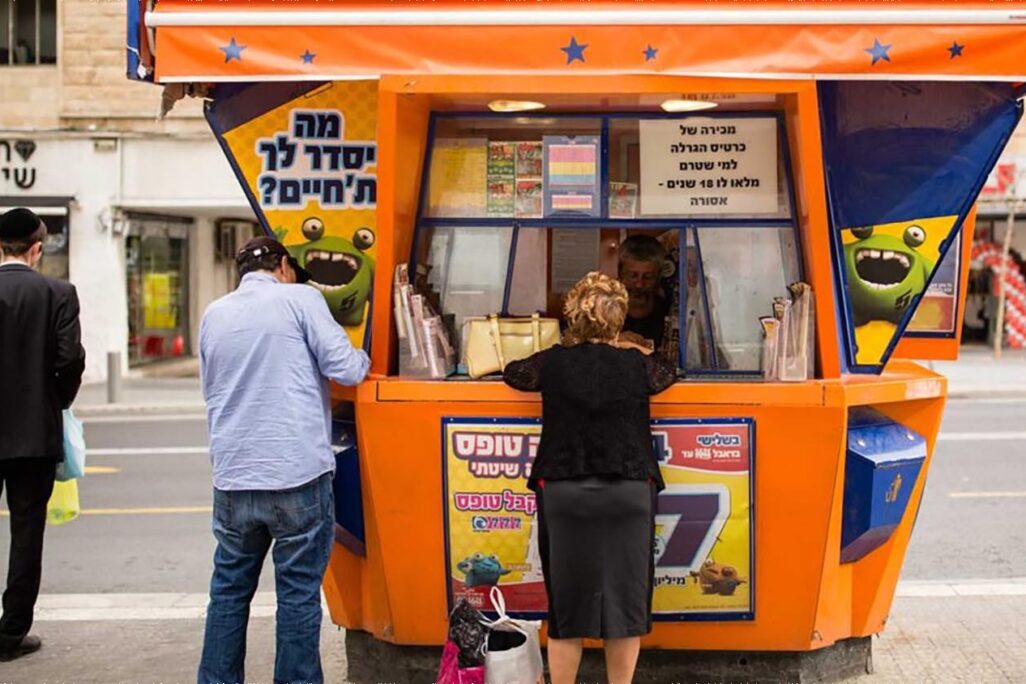
Socioeconomically weak areas have more lottery booths per capita, reports a new study published by the Knesset Information and Research Center.
Israel’s Central Bureau of Statistics (CBS) ranks Israeli neighborhoods according to their socioeconomic situation, expressed in a rating from 1 to 10, with 1 being the lowest socioeconomic group and 10 being the highest. According to the study, the highest concentration of lottery booths is found in areas that are in socioeconomic rankings 3 and 4. The Ministry of Finance renewed last Tuesday the permit to conduct gambling of Mifal HaPais – Israel’s state lottery – since the previous permit expired on April 30.
The study was written at the request of the chairman of the Economics Committee, MK Michael Bitton (Blue and White) and MK Shlomo Karhi (Likud), following criticism of the socioeconomic impact of legal gambling in Israel. As a result of the findings, Bitton has entered into further deliberation on the issue immediately following the Knesset’s Passover recess.
The study cross-examined the economic level of all statistical areas of the CBS, in which about 3,000 to 5,000 people live per region, and the addresses of the lottery booths scattered throughout Israel. In CBS zones rated 3 and 4, there were 60 and 66 lottery stalls per 100,000 people, compared with 28 and 22 stalls in zones rated 9 and 10 – those areas with the highest socioeconomic ranking.
The lottery's best-selling product by a significant margin is ‘Chance,’ – a ball-based lottery that takes place every two hours – with sales of 2.2 billion shekels in 2020. In second place is ‘Hishgad’ – a scratchcard lottery – with 1.4 billion shekels, followed by the primary bi-weekly lottery with only 1 billion shekels. ‘Chance’ alone accounts for 41% of the lottery revenue.
According to a survey conducted on behalf of Mifal HaPais, about 37% of the adult population in Israel participated in the lottery in 2021, and about 13% participated in the Sports Betting Council. The average monthly expenditure per gambler is 300 shekels per gambler, and 320 shekels for sports gamblers.
The average profile of a lottery gambler is a male, over the age of 55, with a non-academic post-high school education, a resident of the center, and an average to high income. On the other hand, the profile for a ‘Chance’ gambler is traditional, with a post-high school academic education, a resident of the south and Jerusalem, and earns an average salary.
The study also examines the illegal gambling market, which constitutes about 60% of all gambling in Israel, according to a survey conducted on behalf of Mifal HaPais. The only forms of gambling that are legal in Israel are the National Lottery and restricted sports betting. Nonetheless, 13% of gamblers reported having gambled by means other than the lottery in the past year, 60% of them in poker. The police estimate that there are hundreds of illegal gambling sites in Israel, but they do not have an up-to-date assessment. About a decade ago, this market was valued at 10-15 billion dollars a year.
This article was translated from Hebrew by Jonathan Epstein.






